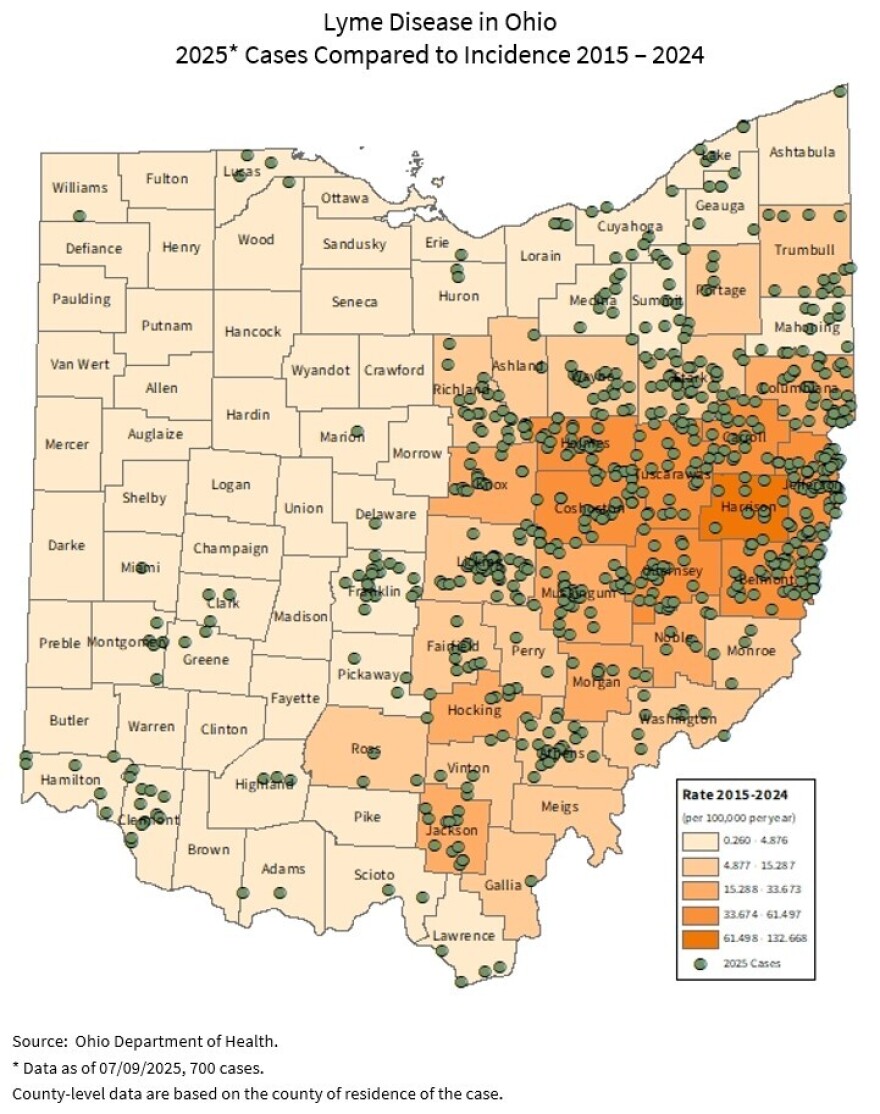Lyme disease cases in the first half of 2025 are outpacing last year's numbers, according to the Ohio Department of Health, with 749 cases statewide as of July 10 this year compared to 429 in early July 2024. The increase is part of an overall upward trend in statewide cases, which have more than tripled in the last several years.
Lyme disease rates began to rise in 2023, when the number of cases rose to 1,301 cases from 554 the previous year, or a 135% increase. The number of cases in 2024 rose to 1,778, a 37% increase from the previous year, according to the Ohio Department of Health.

The increase in cases is due, in part, to changing deer migration patterns and climate change, said Timothy McDermott, a Lyme disease expert at Ohio State University.
“We're seeing increased warmth and increased humidity. Those are things that most of the tick species enjoy," he said. "They need a certain amount of humidity in order to survive.”
Richland County health officials reported double the average number of cases of the tick-borne disease as of early July, while Tuscarawas County officials reported a 44% rise in suspected cases over the first half of the year.
Valerie Wallace, a communicable diseases nurse with Tuscarawas County Health Department, said it’s important for individuals to act quickly if they suspect they have Lyme disease.
“Lyme disease can be such a nasty, debilitating thing," she said. "The longer you have Lyme disease, the more likely you are to have stronger and more severe symptoms, especially those that might affect the heart.”
Wallace recommended meeting with a doctor while experiencing symptoms such as a skin rash that looks like a bullseye and feeling fatigued. Quick action can help avoid more serious health effects over the long term, she said.



